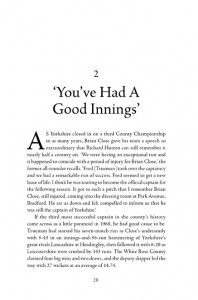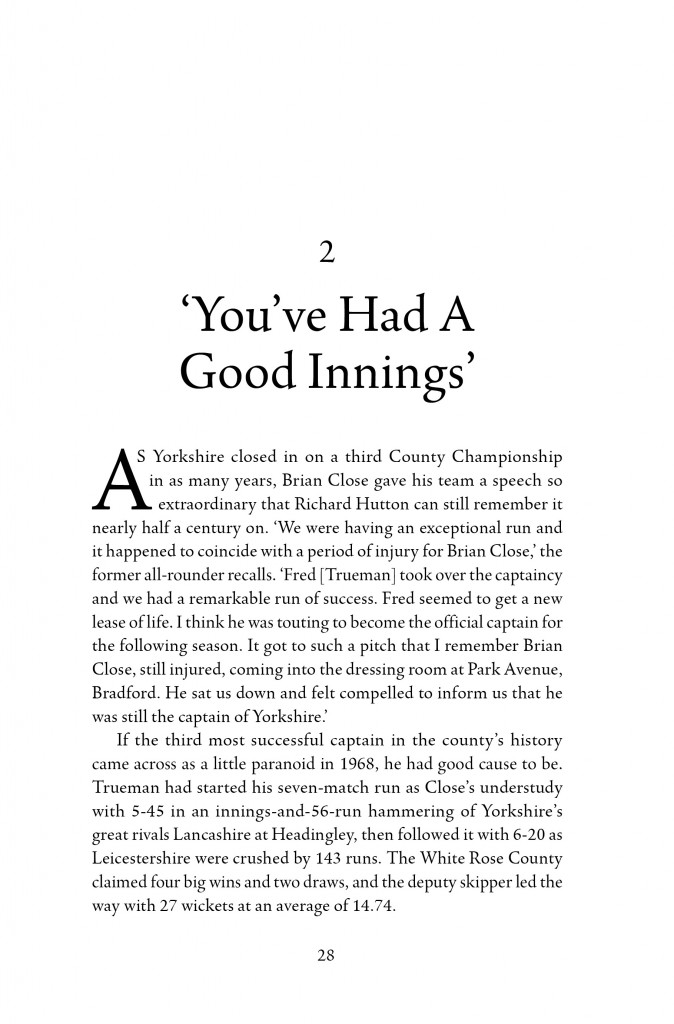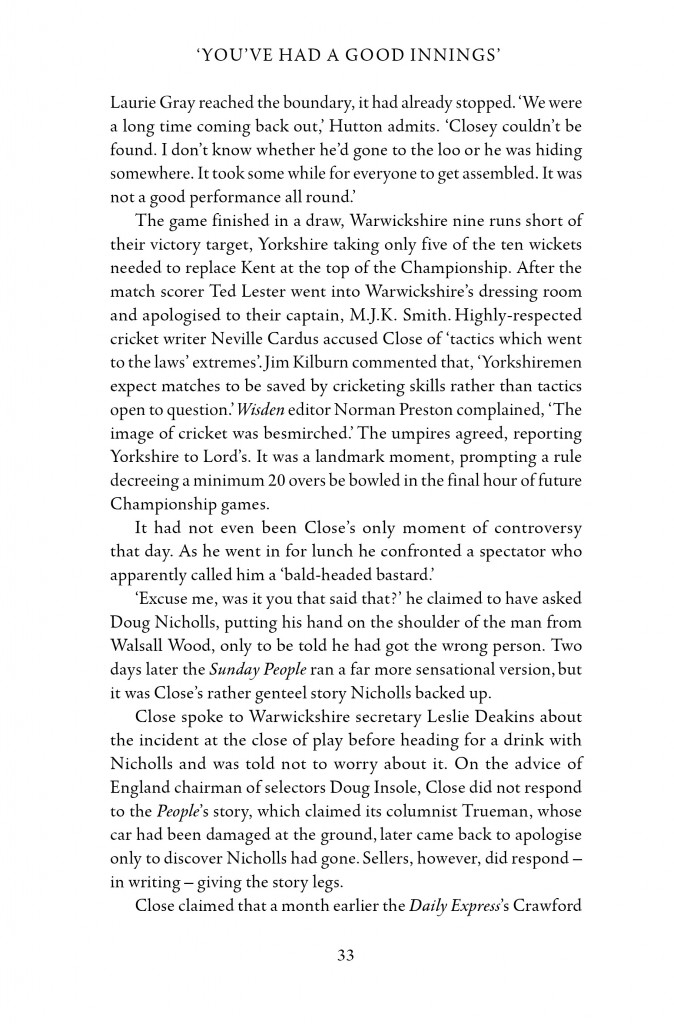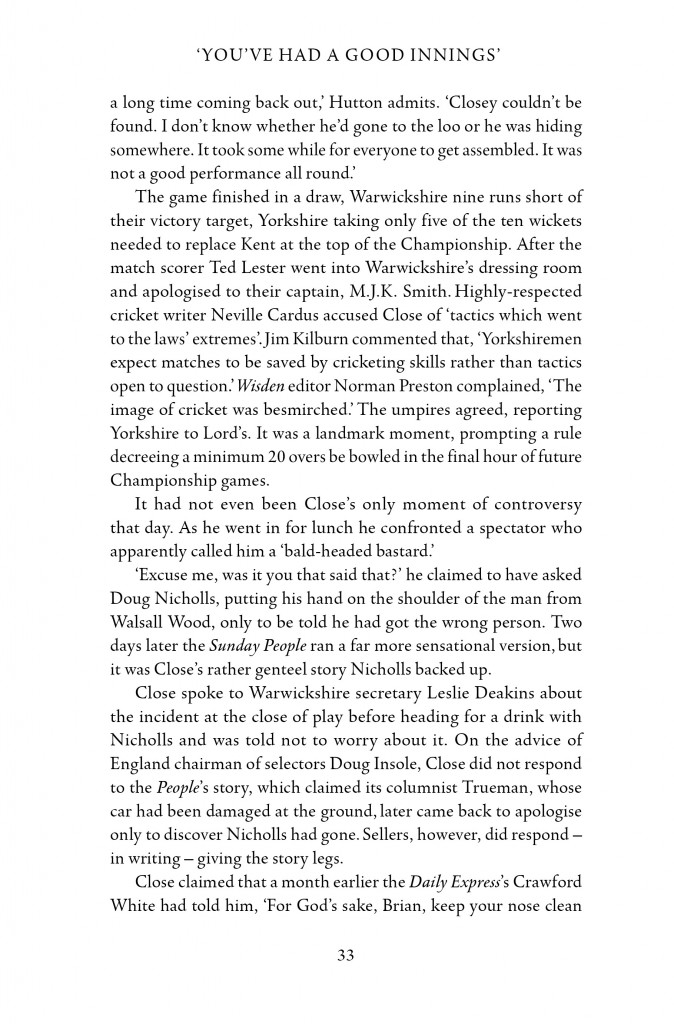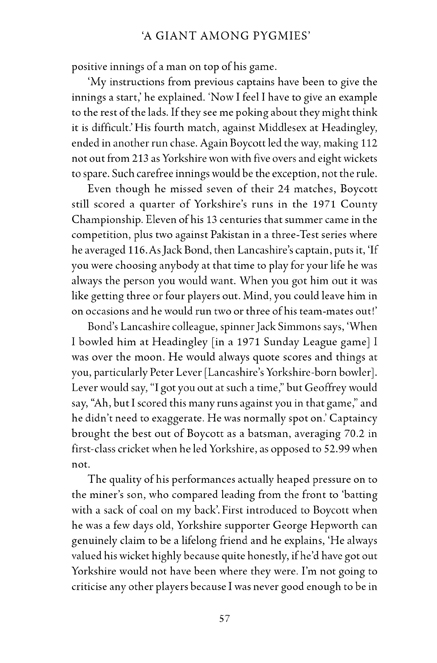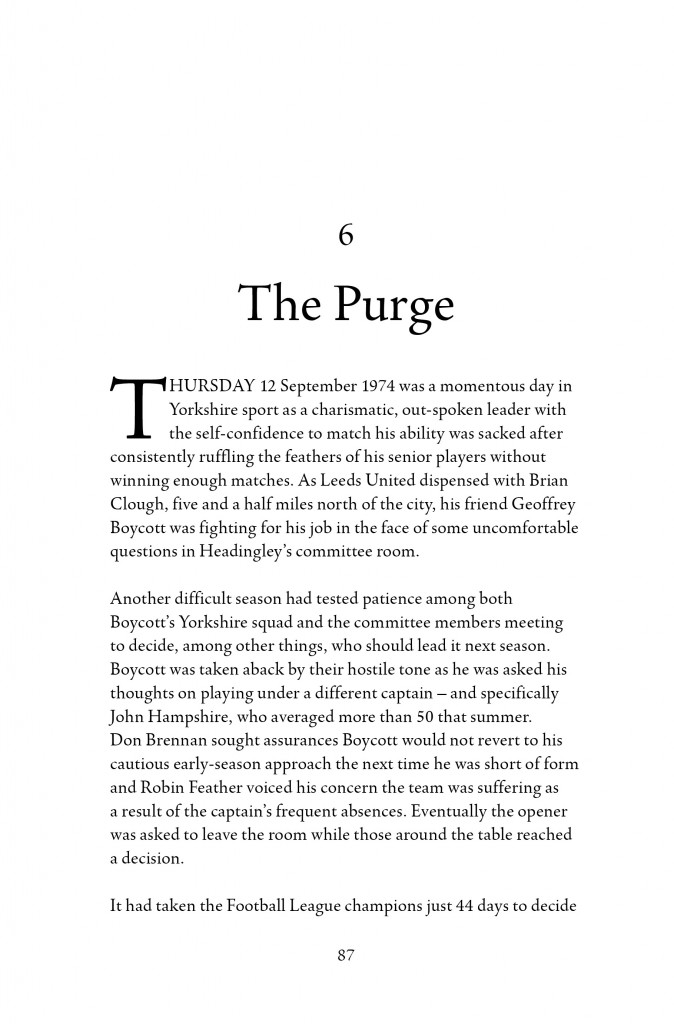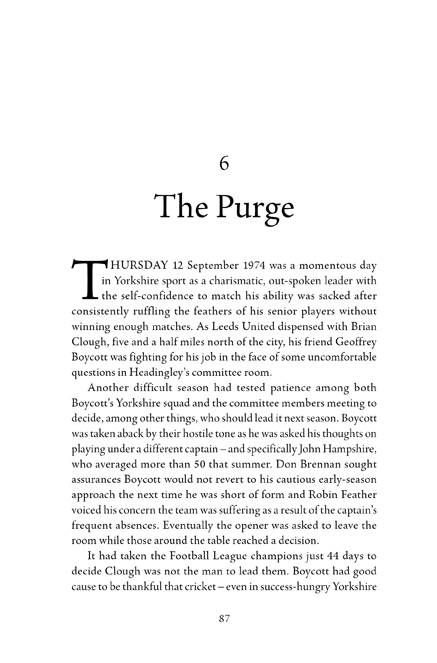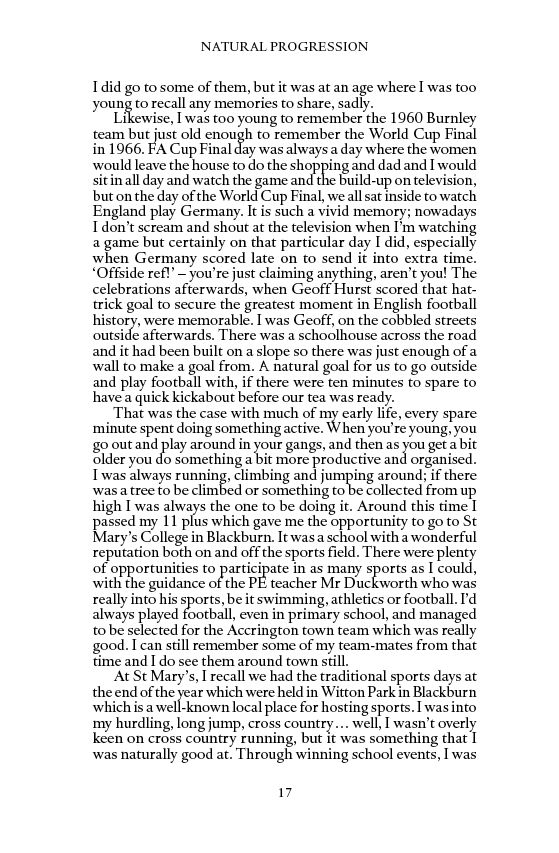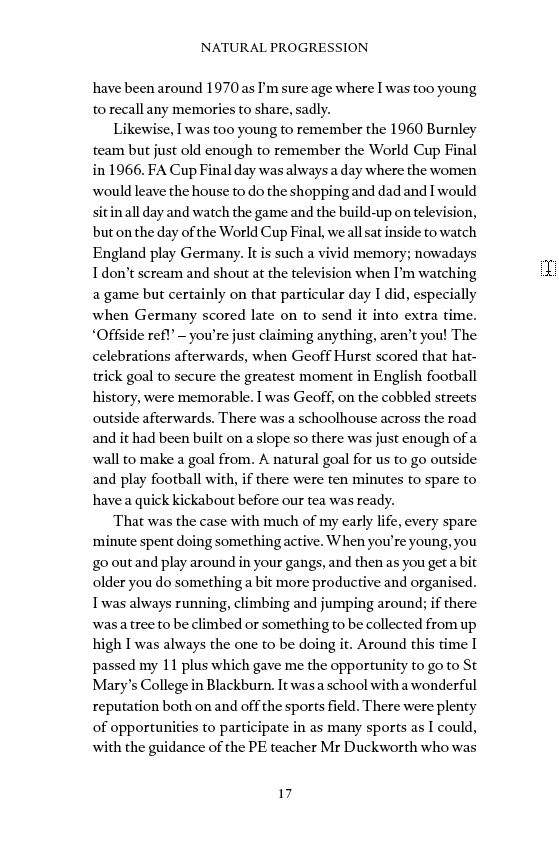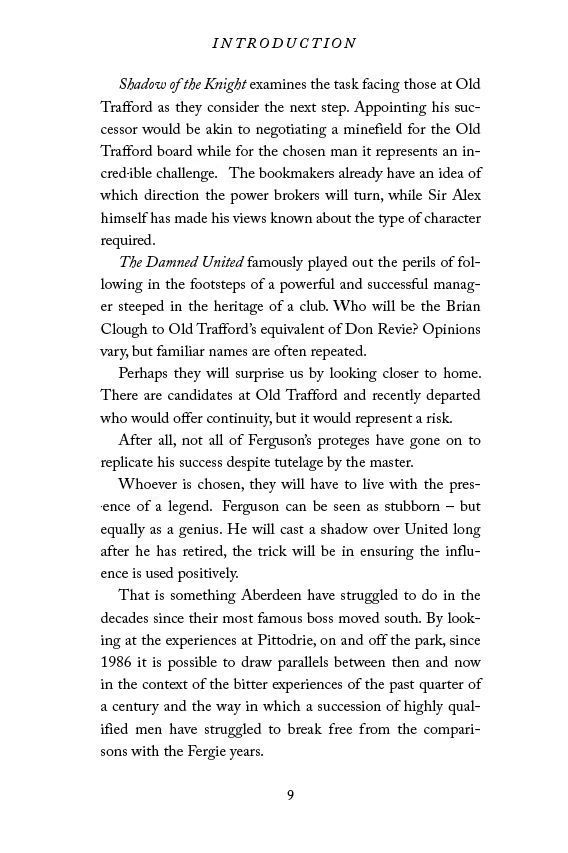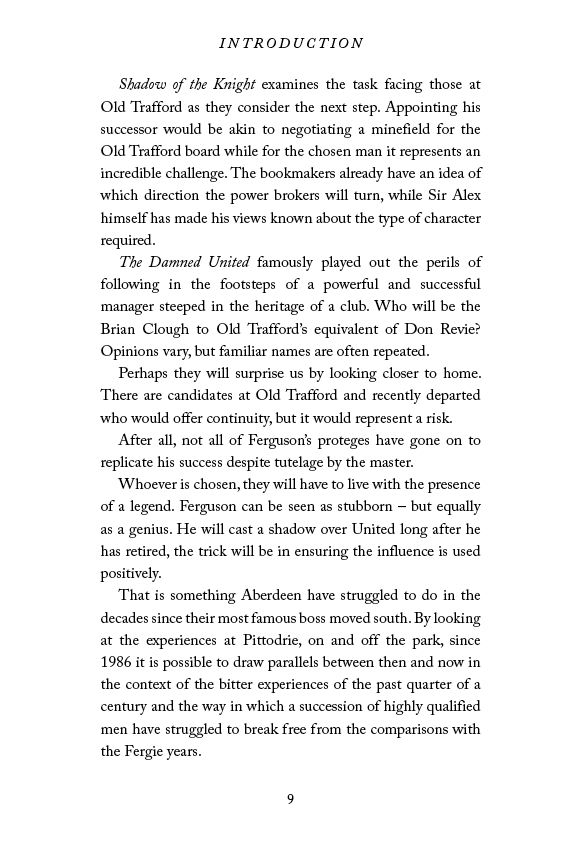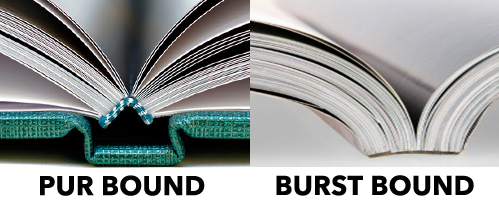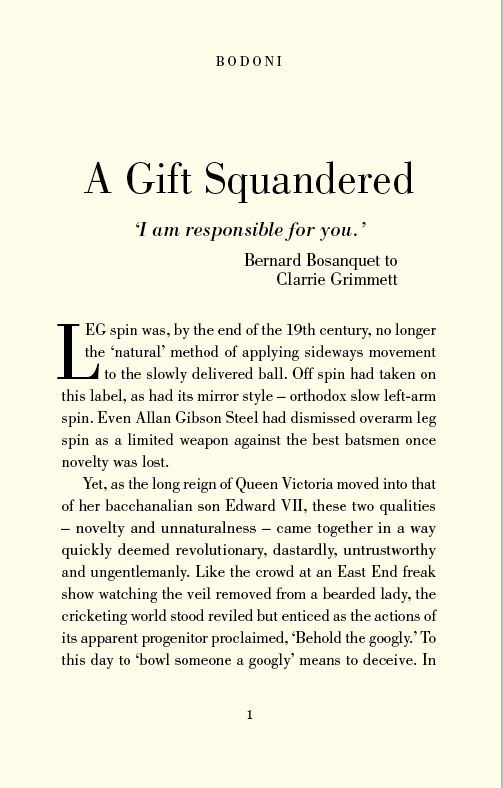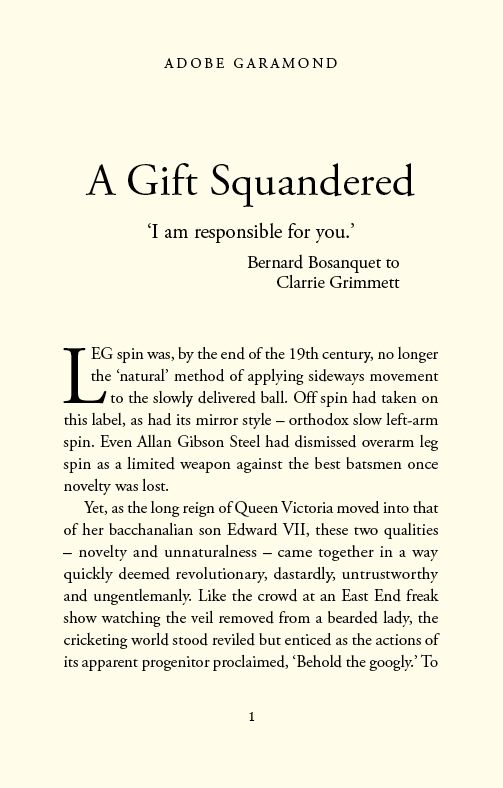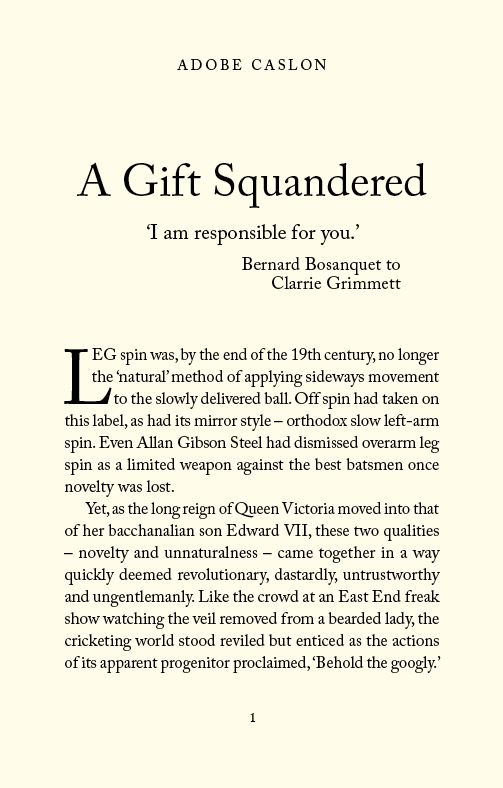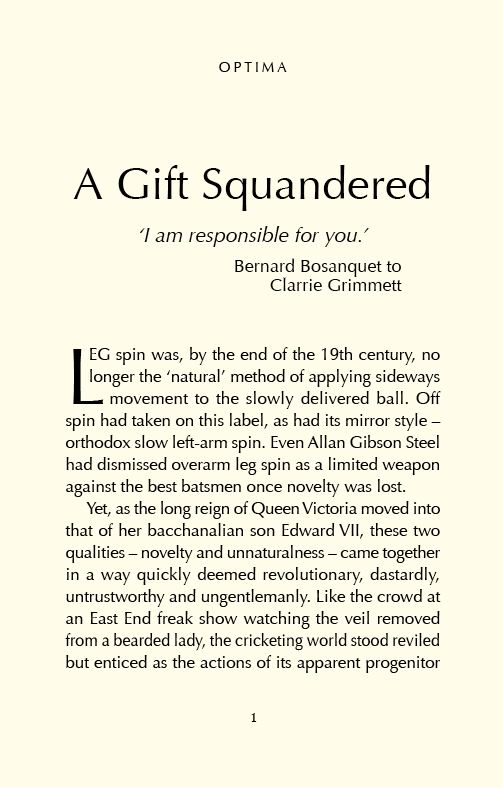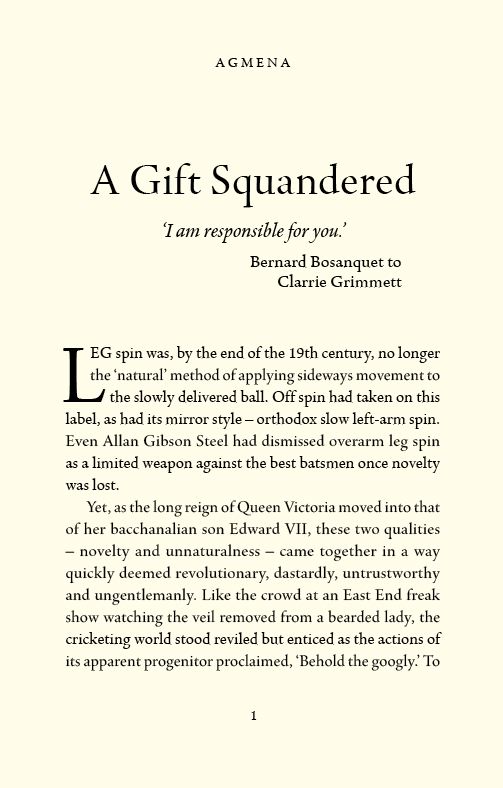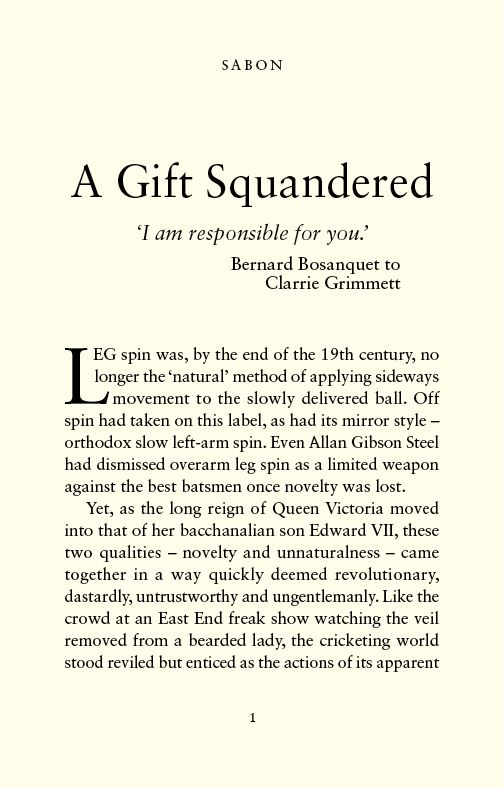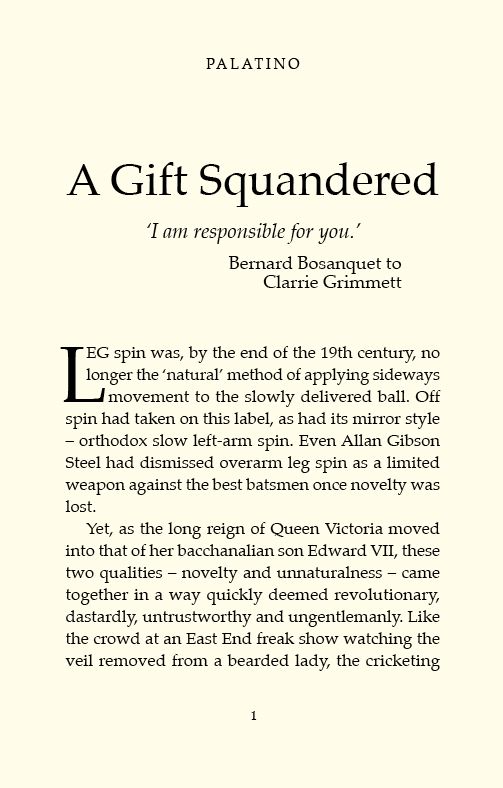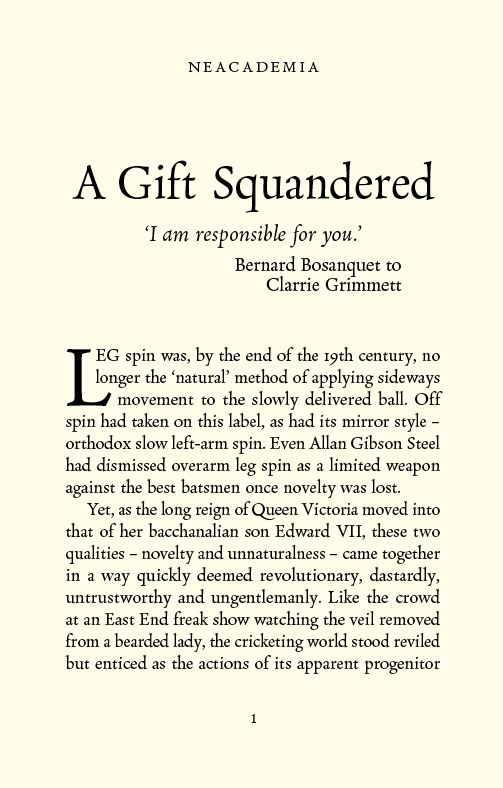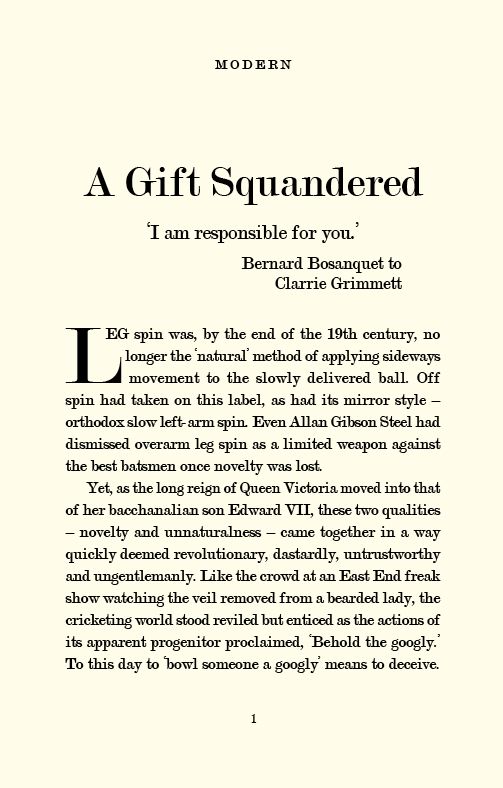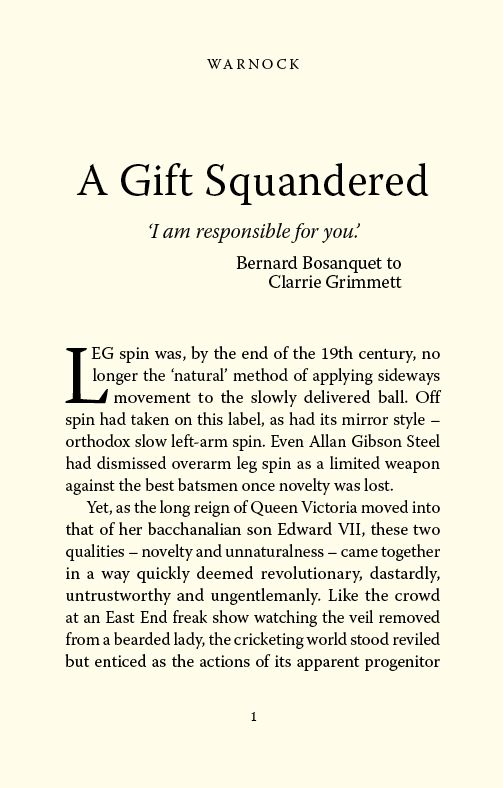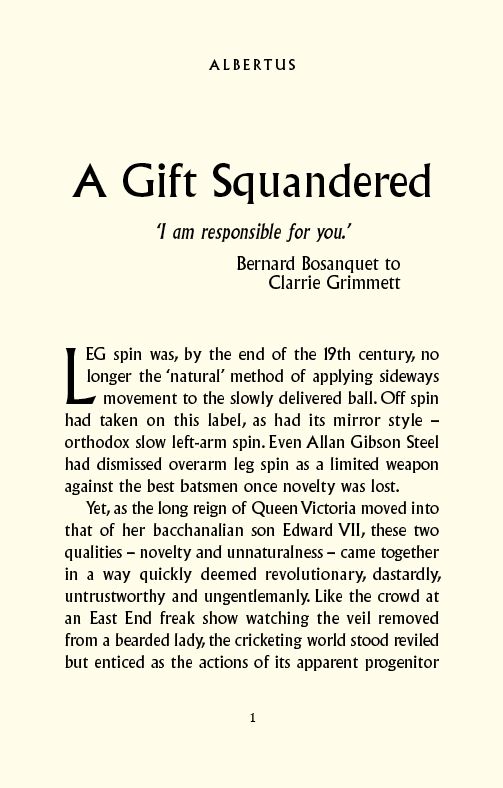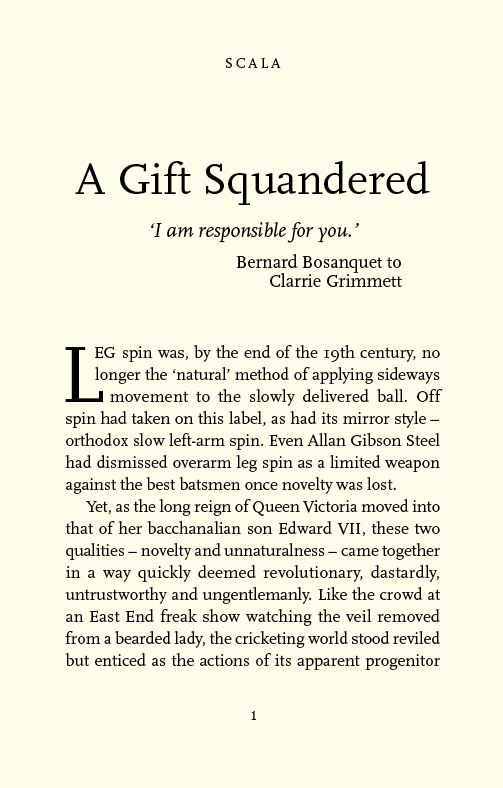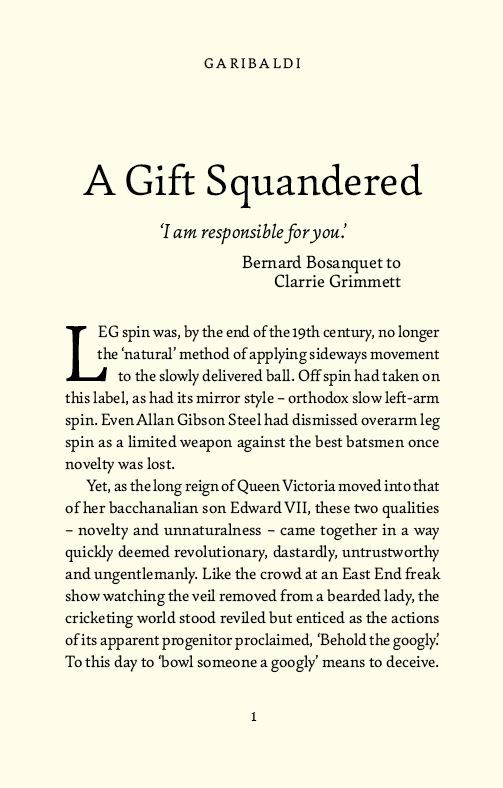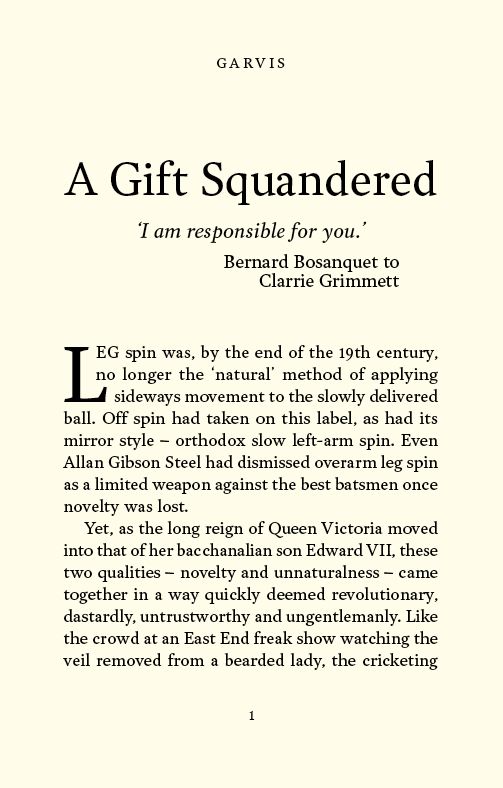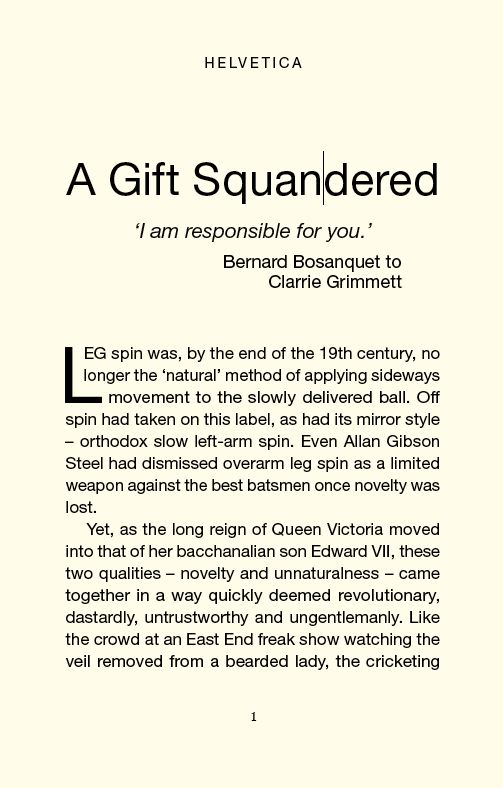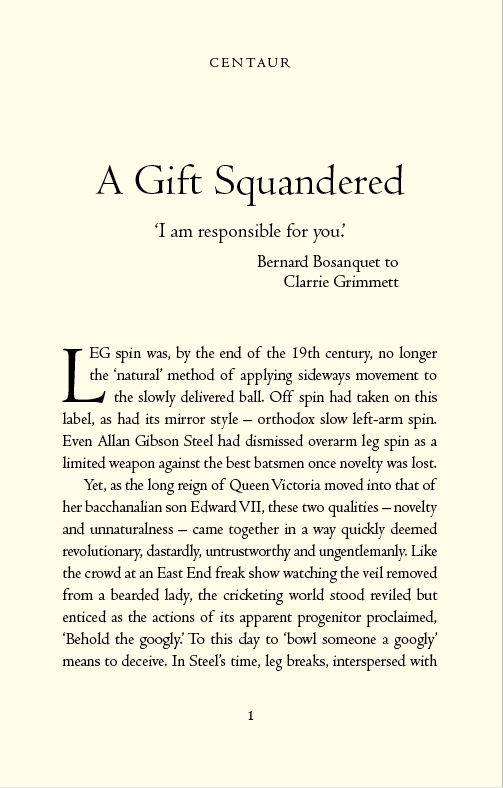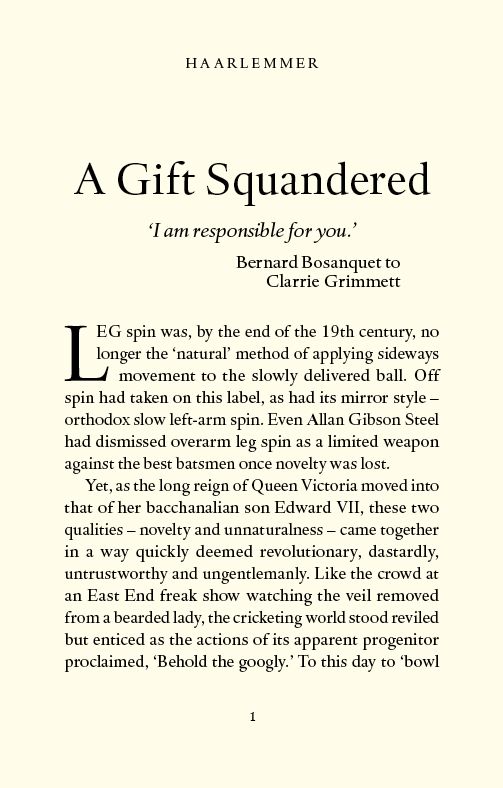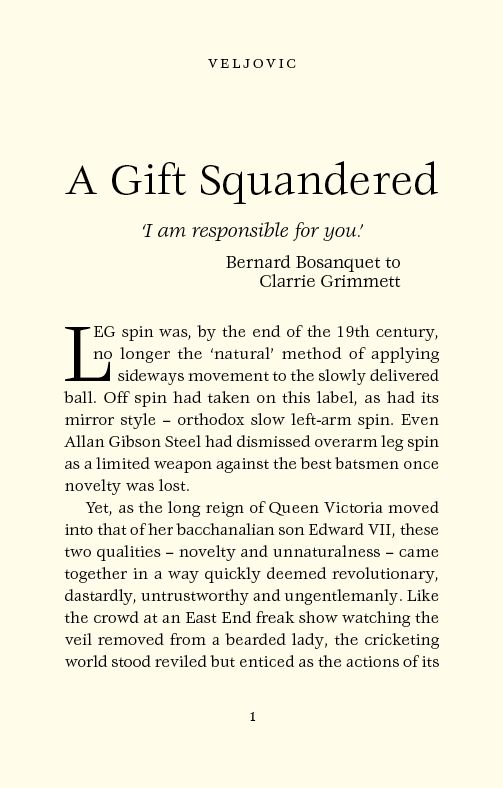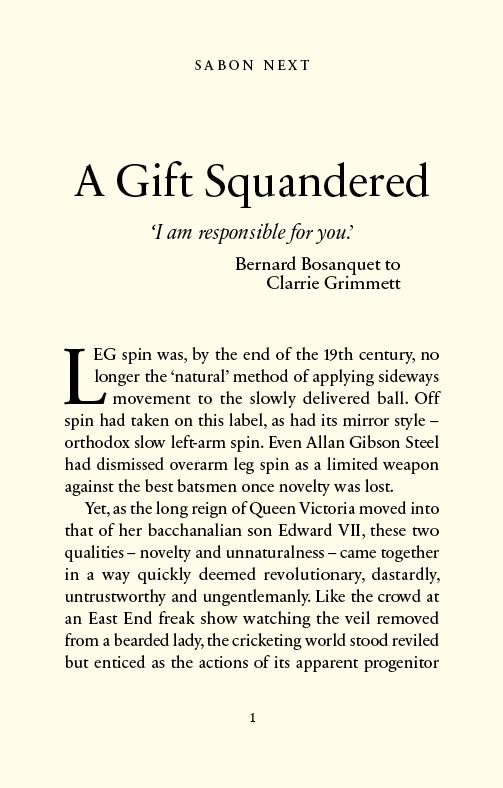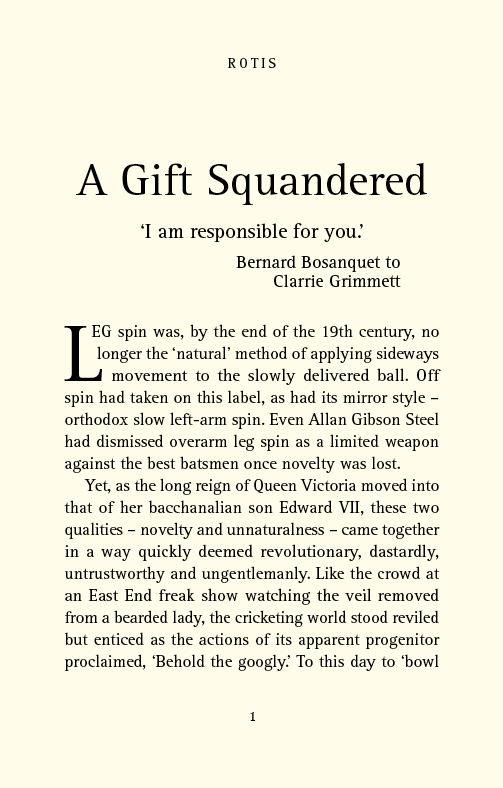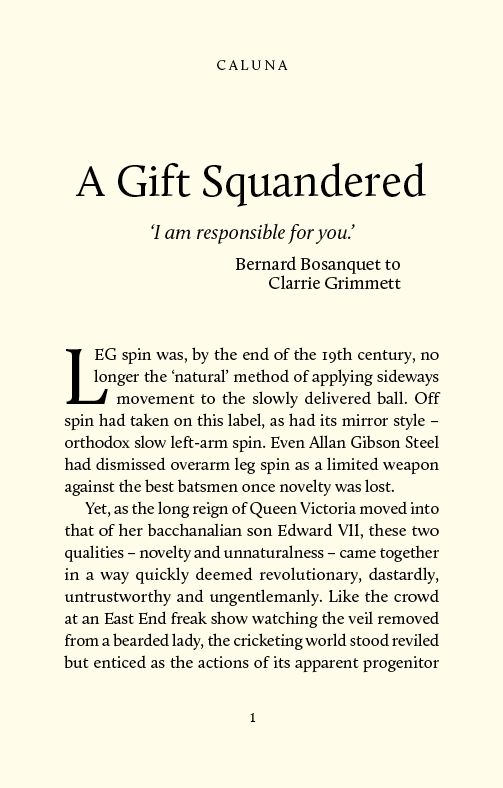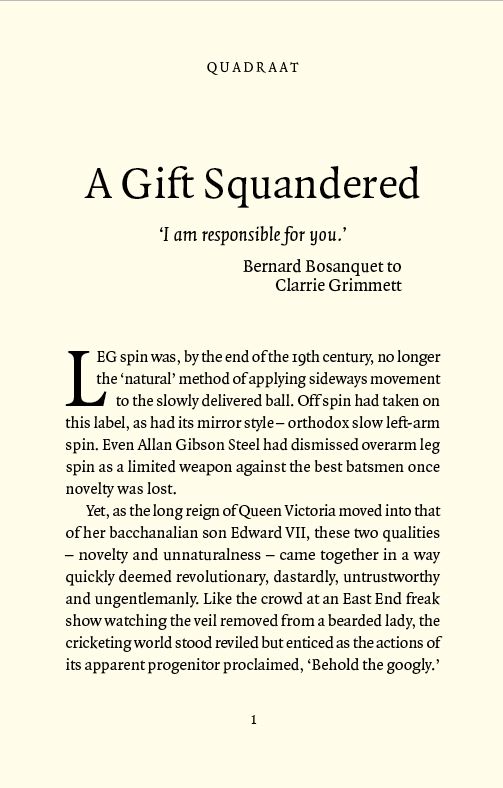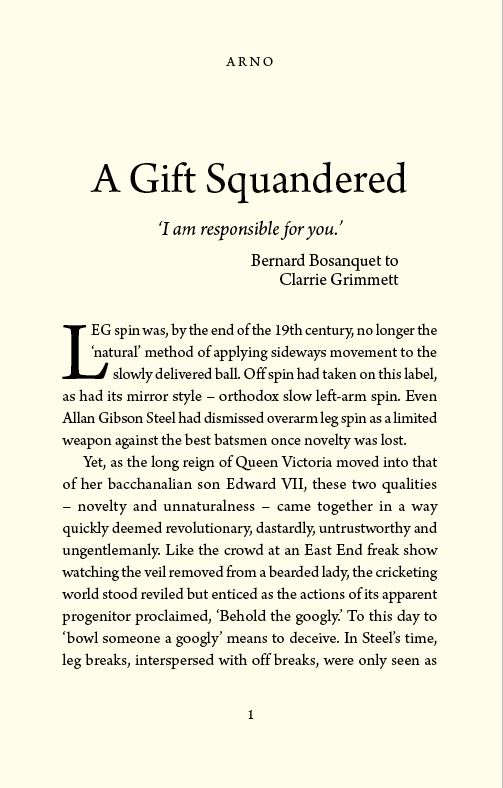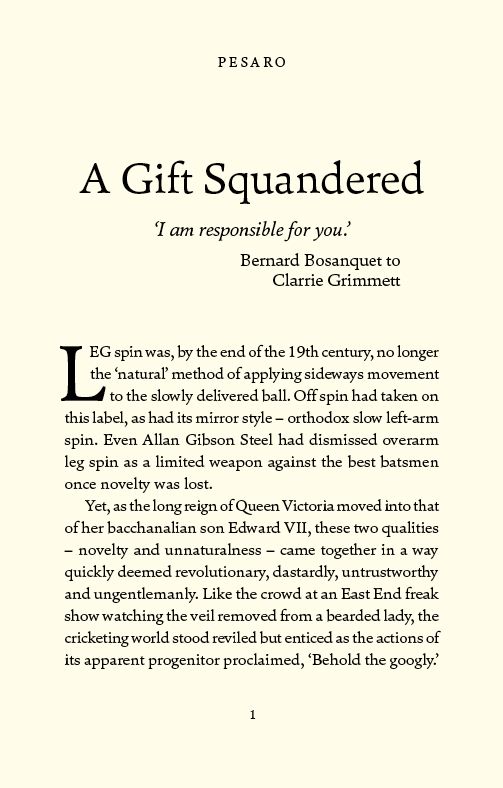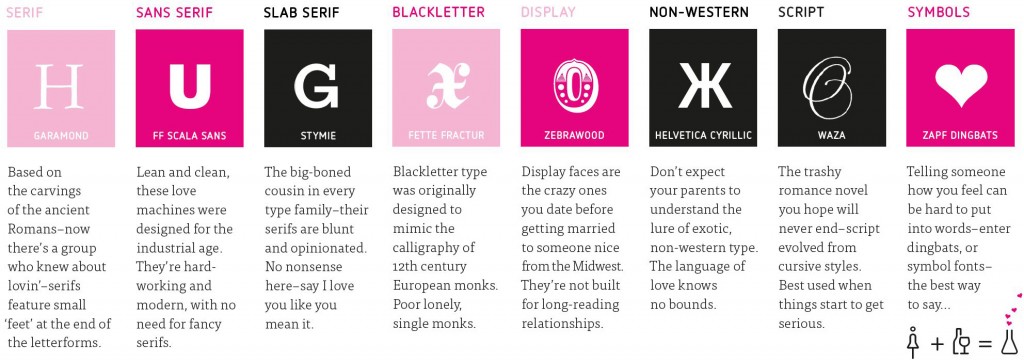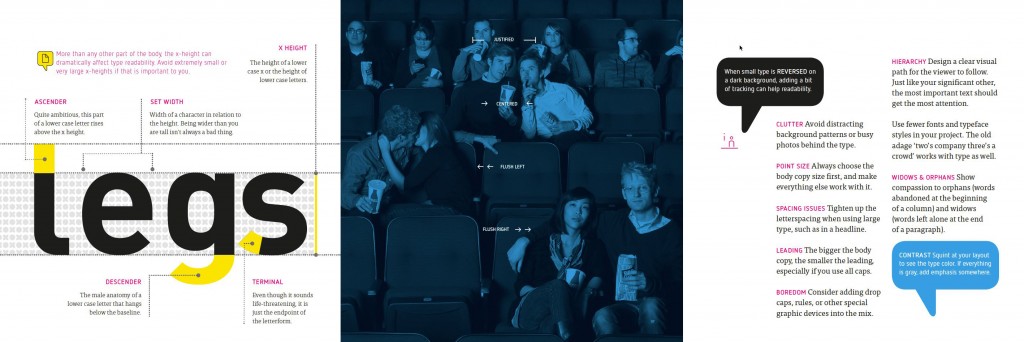-
-
Use full justification for text, so that both the right and left margin line up
-
Never have odd-numbered pages on the left, they should always be on the right with even-numbered pages to the left
-
No running heads on display pages such as title pages, imprint, the contents or any chapter starts
-
Make sure margins are not too small, they must be big enough to allow the reader to easily hold the book, or for the book to open without stretching the gap between pages of a spread (see notes on book binding)
-
Saddle Stitched (stapled) 8-72 pages. Two staples are applied to the backs of the folded pages. The most cost-effective way of binding.
Perfect Bound (square back) 48 pages+ EVA (ethyl vinyl acetate) glue. Sections of folded pages (signatures) have their spines trimmed off and roughed up to improve bonding with glue. All sections are collated and glued to its wrap-around cover. Cover is always scored on back and front, for ease of opening and less stress on spine. Paperback novels are one example of perfect binding.
Burst binding is performed by removing a small slot from the spine of the text at folding stage, the adhesive flows through the slot to give added strength to the book. It is best to allow an extra 5mm in the backs with this method as the book does not fold open flat. Durable and has a low to medium cost.
The difference between Perfect Binding and Burst Binding is in the spine preparation. Burst Binding requires the spine to be notched, done during the folding process using a special burst notching attachment.
PUR (polyurethane reactive) glue is the most durable binding glue available, offering design flexibility for any number of applications. It allows the book to open flat. It is more expensive than burst binding and is considered the strongest bookbinding adhesive on today’s market.
Case-bound and thread sewn 48 pages+ Binding used for hardcover books. Several different types to choose from, but typically involves inside pages being sewn together in sections with thread. These are then glued to end papers which are glued to cover’s spine. Sewn through the spine of each signature with a single thread thus enhancing the strength and quality of the book and enabling it to lay flat open. Typically section sewing is applied for books that require heavy usage for an extended period of time.
Burst and perfect binding are also often used for hardback books, with end-papers to attach to the case. Again an extra few millimetres are best allowed for in the backs for perfect and burst binding because these do not open flat, unlike thread sewn books.
A case-bound book often has a jacket to protect the book, and is usually laminated in gloss or matt.
Good book typography is generally most successfully achieved when it doesn't get noticed! It has a functional role to play, and it rarely has to do much more than be legible to accomplish that goal, but it does have to look inviting. Though readers will probably not take conscious note of your book font choice, they’ll react instantly and intuitively to the tone set by your page.
The two major choices are serif and sans-serif. Serifs have small lines at the ends of the strokes of each letter, sans-serif fonts lack these. Times is a serif font, Helvetica is a sans-serif font. Serifs are much easier to read and typically the choice we use for book typesetting. There are many options, like slab-serif fonts (Rockwell), or you could go back to the beginning when only black-letter fonts were used (Old English), based on Gothic type and late medieval calligraphy but I suggest you don't. Talking of which, never capitalise black-letter fonts, or script fonts, they are unreadable when you do this.
The history of typefaces can be fascinating, like discovering the popular font Mrs Eaves was named after Sarah Eaves, the woman who became John Baskerville’s wife. As Baskerville was setting up his printing and type business, Mrs Eaves moved in with him as a live-in housekeeper, eventually becoming his wife. Like the widows of Caslon, Bodoni, and the daughters of Fournier, Sarah similarly completed the printing of the unfinished volumes that John Baskerville left upon his death. Then there is Arthur Eric Rowton Gill, an English sculptor, typeface designer, stonecutter and printmaker. He was a controversial figure, known for his religious views and subject matter at odds with his sexual behaviour, including his erotic art and sexual abuse of children and of an animal. Best known for the fonts Gill, Perpetua, Joanna and collaborating for the lettering used on the London Underground, which Gill is based on. Adrian Frutiger, who devoted his life to creating san serif fonts, known for Univers, Frutiger, Apollo, Vectora and Avenir. Search the web for the story behind the controversial Microsoft font Arial, or America's decision to remove the typeface Clearview from its highway signs. I can't believe no one has made a movie yet about fonts!
Each popular book typeface example below has been typeset in 13pt with 17pt leading, for you to compare their differences. Click on them to see a larger image:
Facts about fonts
Don’t get confused by typeface point sizes. if you like the way another book looks, and find out that it is set in 11pt Bembo, you might think you can get pretty much the same effect on a page with 11pt type of a font you have. That rarely is the case.
Us typesetters are often more concerned with the typeface’s x-height in relation to the point size. The x-height is the height of the lowercase letters. Here’s a sample of 100pt Bembo which has a small x-height. A more modern roman face, Callisto, the x-height is almost 20% larger than Bembo’s. How about this sample of Impact. Remember that these three examples are all the same point size.
So when it comes to choosing type, make sure you know what it will look like on the book page. Factors like x-height have as much — and sometimes more — to do with how your page will look than just the size of the type might indicate.
Some further reading
Books
Designing Type by Karen Cheng
Designing With Type: The Essential Guide to Typography
by James Craig, William Bevington, Irene Korol Scala
Stop Stealing Sheep by Erik Spiekermann
The Complete Manual of Typography by Jim Felici
The Elements of Typographic Style by Robert Bringhurst
Thinking With Type by Ellen Lupton
Type: The Secret History of Letters by Simon Loxley
Websites & Blogs
100types.com
aiga.org
bitique.co.uk
dailydropcap.com
designobserver.com
designworklife.com
formfiftyfive.com
friendsoftype.com
grafikcache.com
ilovetypography.com
ministryoftype.co.uk
tdc.org
thinkingwithtype.com
thevisualdictionary.net
typographer.org
typographica.org
typophile.com
welovetypography.com
